Japan is known worldwide for its vast, efficient, and punctual railway system; arguably, the most famous railroad in history was born there. The country’s first-ever passenger train—pulled by a steam locomotive built in the United Kingdom, the birthplace of steam trains—was introduced on October 14, 1872. The 18-mile (29-kilometer) train trip between Tokyo’s Shimbashi station and Yokohama took 53 minutes to complete.
Even though bullet trains steal most of the press, rail-fans, nature lovers, and slow travelers alike will be glad to know that Japan still boasts many steam locomotive (SL) routes. JR or Japan Railway’s regional branches operate many of these routes.
Travelers looking for a more relaxed trip might be surprised to learn that the country still hosts steam locomotives offering a retro trip through Japan’s four seasons.
(Don’t leave Tokyo without these must-do experiences)
1. SL Banetsu Monogatari (JR East)
Best for: History buffs
Route: Niitsu (Niigata Prefecture) to Aizu-Wakamatsu (Fukushima Prefecture)
Journey time: 3.5 hours
Distance: 69 miles
The Tohoku region’s SL Banetsu Monogatari is the longest ride by distance, covering a total of 69 miles (111 kilometers) from end to end. Built in 1946, it was the last of the locomotives on this list used in regular passenger service, operating until 1969. Fun fact: The last regularly scheduled steam train service in Japan was on the Muroran main line in Hokkaido, dating back to December 1975. The Niitsu Daiichi Elementary housed the locomotive until 1999. At the school, one of the train carriages operated as a play area for kids.
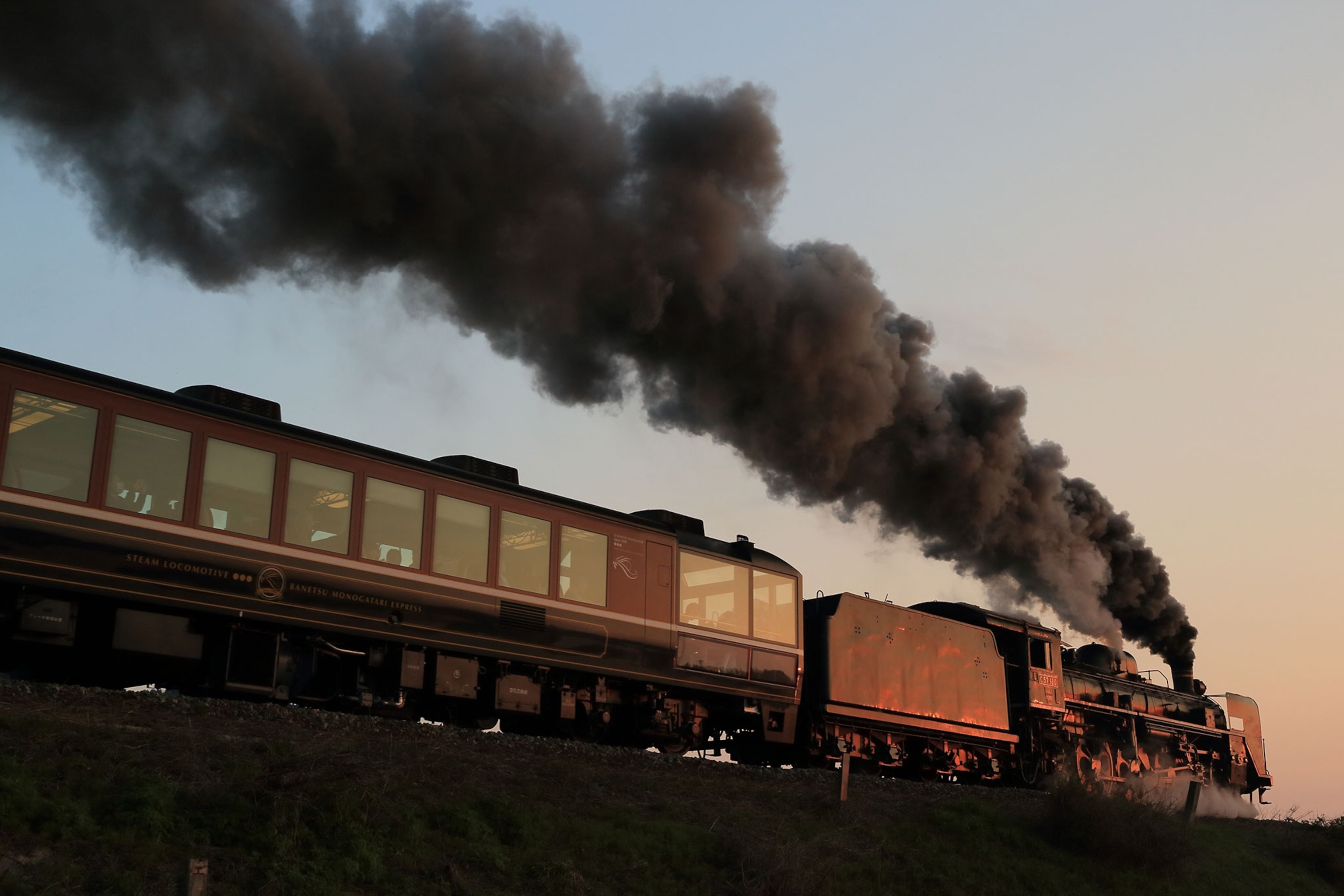
Steam locomotive, SL Banetsu Monogatari runs between Maoroshi and Saruwada stations in Gosen, Niigata, Japan. It’s one of five train trips travelers should consider to see a different side of the country.
Photograph By Manabu Takahashi/Getty Images
Other highlights on the SL Banetsu Monogatari include an observation car where passengers can admire the rice fields that have helped make both Niigata and Fukushima Prefectures famous for their sake (nihonshu), and a Green Car, a Japan Railway train car similar to business-class with fewer and larger seats. There’s only reserved seating on the SL Banetesu Monogatari because of its popularity; however, holders of some JR Rail Passes can get a seat at no extra charge.
(This Japanese region is home to a unique fusion cuisine—here’s what to know)
2. SL Fuyu no Shitsugen (JR Hokkaido)
Best for: Wintry national park views
Route: Kushiro to Shibecha (Hokkaido Prefecture)
Journey time: 1.5 hours
Distance: 30 miles
Translated as “winter wetlands,” SL Fuyu no Shitsugen is Hokkaido’s lone steam locomotive that only runs between January and March. As the train plows through snow packs in Kushiro Wetlands National Park—the largest wetlands area in the country—riders hear more about the natural diversity of the park from a local expert on the train or through a multilingual audio guide. If you are worried about not snagging a great view, try booking cars one or five. Passengers have an opportunity to see vistas of mountains and rivers, depending on the carriage arrangement. Varnished wood décor interiors help add to the ride’s retro feel, which also includes a potbelly stove that passengers can use to cook seafood sold in the dining car.
SL Fuyu no Shitsugen is reserved seating only, but passengers can make a reservation using the national Japan Rail Pass.
(Everything you should know about visiting Japan)
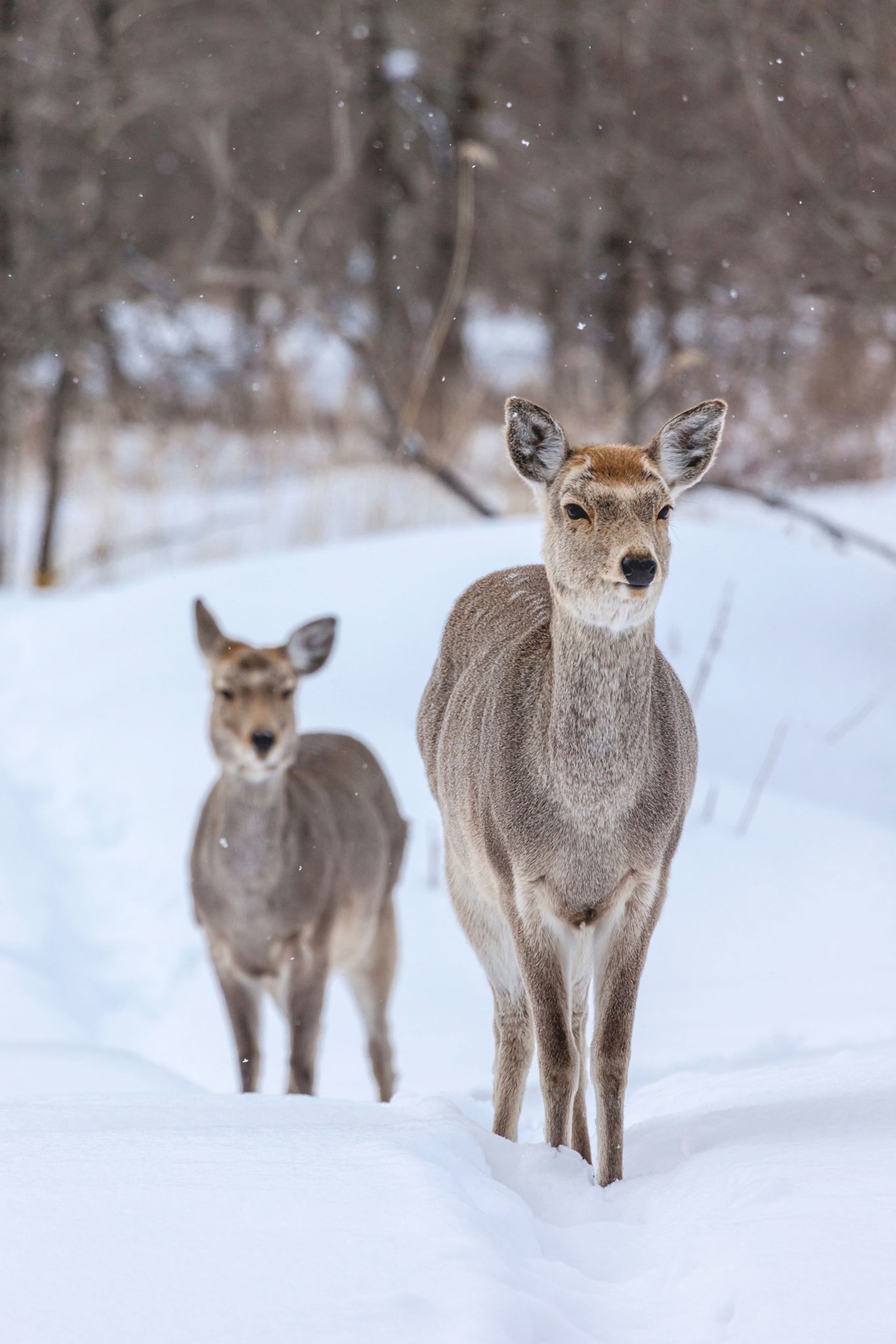
Journey to the Hokkaido Prefecture for a train ride on the SL Fuya no Shitsugen to spot wildlife, such as deer, in Kushiro Shitsugen National Park.
Photograph By Horizon Images/Motion / Alamy
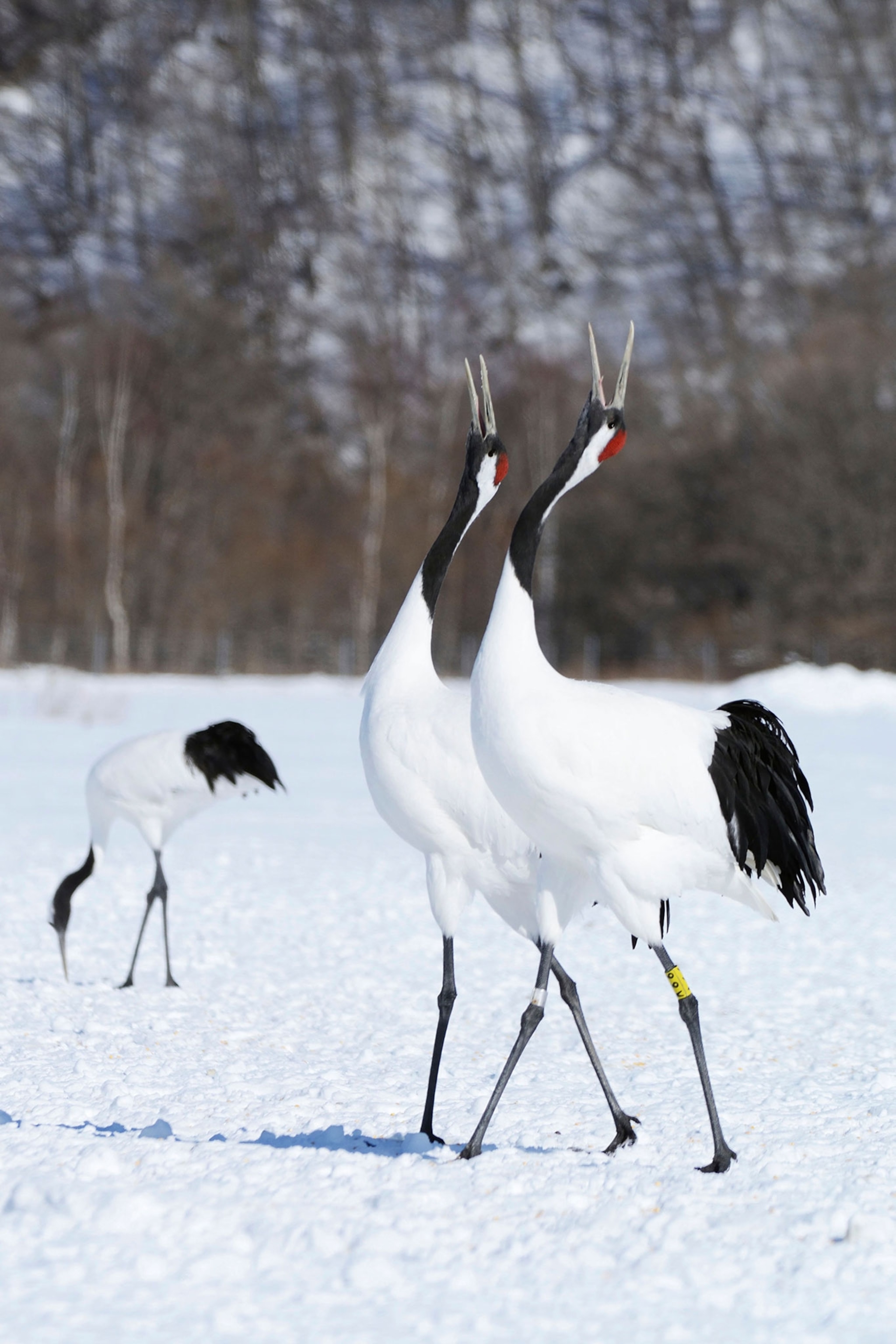
Kushiro Shitsugen National Park is also home to red-crowned cranes, also known as Japanese cranes or Manchurian cranes.
Photograph By imageBROKER.com / Alamy
3. SL Gunma (JR East)
Best for: Fall foliage and adventure seekers
Route: Takasaki to Minakami (Gunma Prefecture)
Journey time: 2 hours
Distance: 37 miles
The eponymous SL Gunma, in Gunma Prefecture, is one of the more accessible steam trains from Tokyo; its usual starting point, Takasaki, is only a 50-minute Shinkansen (bullet train) ride from the capital. Passengers can choose from one of two locomotives to steer their journey; one was initially used to haul freight, and the other to transport commuter trains. This train line divides the passenger cars into two types. Constructed as far back as 1938, the more historic series was refurbished in 2020 with varnished wood interiors to give them a retro look. Alternatively, there is a car from 1978 that looks more modern, replete with air conditioning and automatic doors.
The SL Gunma is another line run by JR, so a few different rail passes can be used to enjoy the mountain ranges and onsens (hot springs) that pepper this region.
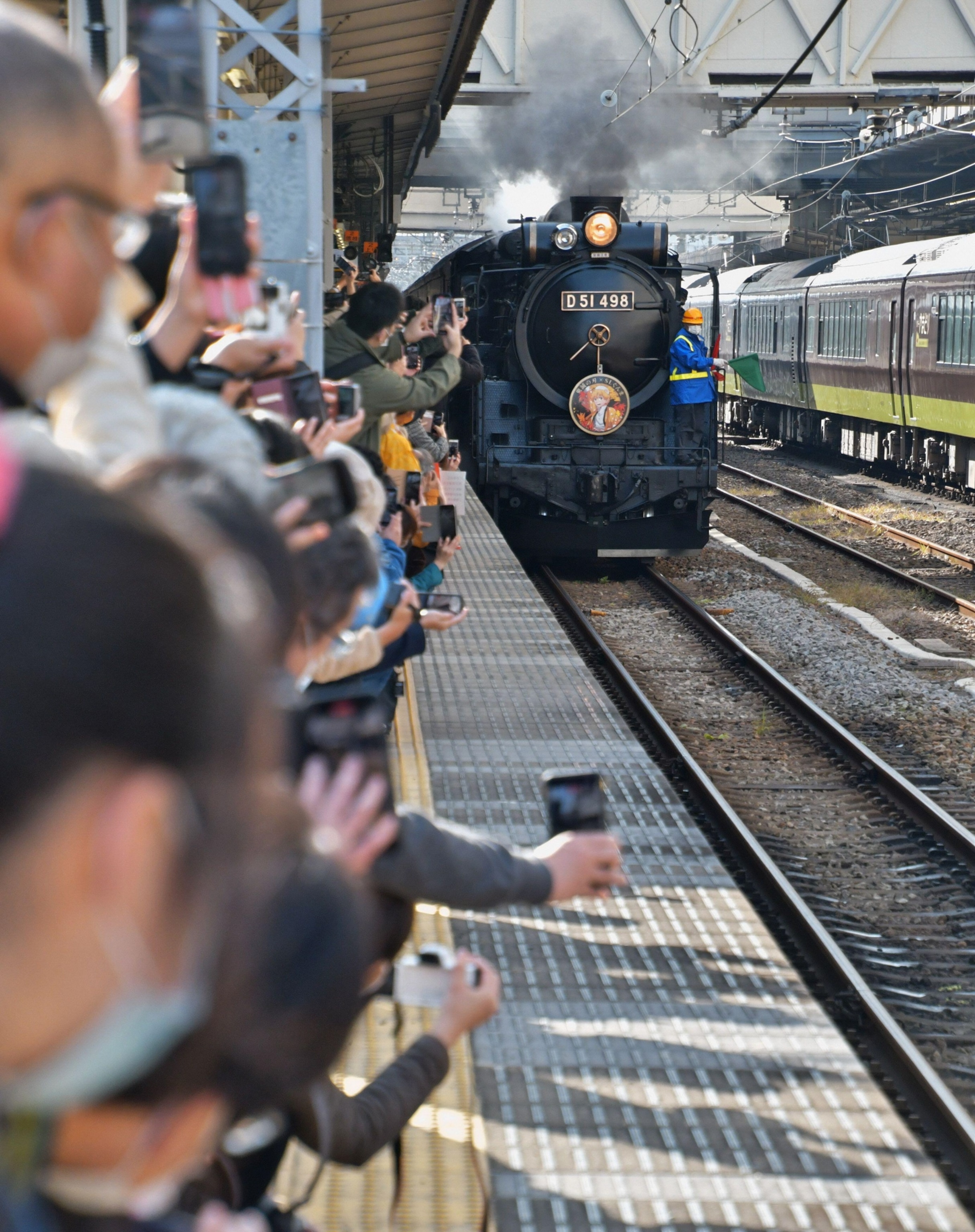
People take a photo of the steam locomotive Class D51-498 during an event at Takasaki station in Gunma Prefecture, Japan.
Photograph By Keizo Mori/UPI/Alamy
Fun fact: Japan’s topography is around 70 percent mountains and hills. How do steam trains manage to overcome constantly changing elevations? According to Tomonori Takahashi, an engineer at JR East, “Coal is burned to increase steam pressure. The water level in the boiler is raised to prevent the boiler water from becoming uneven due to the slope.”
(Why winter is the perfect time to visit Japan)
4. SL Paleo Express (Chichibu Railway)
Best for: Nature lovers
Route: Kumagaya to Mitsumineguchi (Saitama Prefecture)
Journey time: 2-3 hours
Distance: 35 miles

Many tourists stop and visit Nagatoro when riding the SL Paleo Express on Chichibu Railway.
Photograph By Picture Cells/Shutterstock
Chichibu Railway’s SL Paleo Express started service in 1988. It runs between April and December on Saturdays, Sundays, and public holidays, making it an easy weekend Tokyo day trip for much of the year. This steam train trundles through Chichibu, a region so close to the capital, yet unexpectedly filled with limestone cliffs and densely forested mountains.. At Mitsumineguchi, the western terminus, there’s a small park where riders and sightseers can watch the locomotive get rotated on a turntable to head back to Kumagaya. According to Kiminzo Ozawa, a representative of the Chichibu Railway tourism department, “we are working to extend the route toward nearby Gyoda station to stimulate regional revitalization and boost demand.”
(Traditional Japanese crafts are at risk. Here’s how travelers can help.)
5. Thomas the Tank Engine (Oigawa Railway)
Best for: Families
Route: Shin Kanaya to Kawane Onsen Sasamado (Shizuoka Prefecture)
Journey time: Approximately 40 minutes
Distance: 23 miles
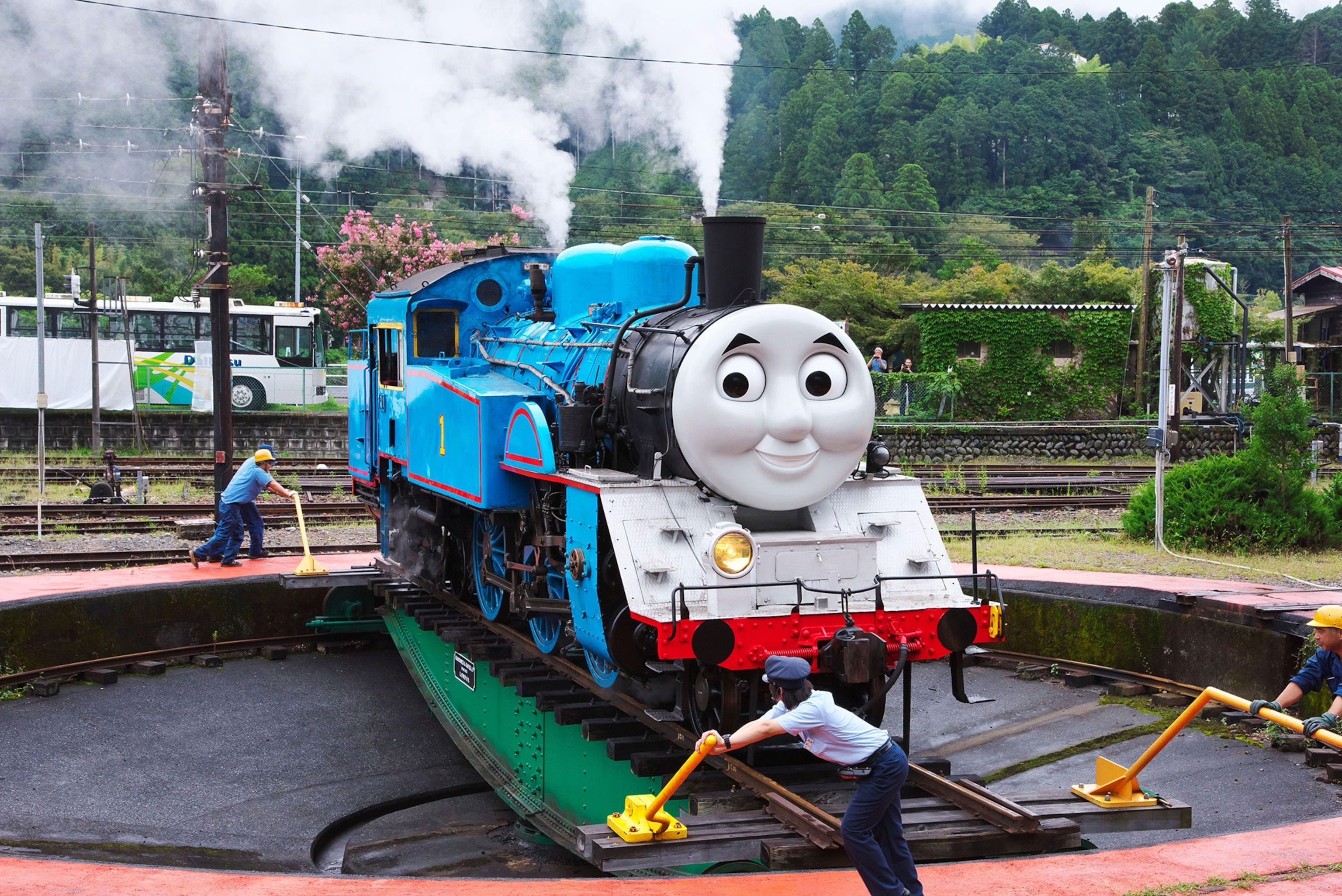
Thomas the Tank Engine spins on the turntable or rotating platform in Japan’s Shizuoka Prefecture before heading back to Shin Kanaya.
Photograph By Amana images inc. / Alamy

Families traveling along the Oigawa Railway on Thomas the Tank Train, based on the character of a popular British children’s book, can see these lush tea plantations in Oobuchi Sasaba in Shizuoka Prefecture.
Photograph By Princess Anmitsu/Shutterstock
Shizuoka Prefecture might be one of the green tea epicenters of Japan, but the country’s Thomas the Tank Engine steam locomotive might give passengers the feeling like they’re in the U.K. In 2014, the train—based on the character featured in the nearly 80-year-old English children’s book—was sold out for months. Tickets can be hard to come by because this train has a fairly limited run, operating only during weekends between June and October. When it is operating, kids have an opportunity to see some of the other storied trains from the series, such as James and Hiro, at Senzu station. For visitors interested in climbing aboard, there is one caveat—tickets are only available in Japan through at Lawson (a chain of convenience stores) and the travel website Asoview.
(Seven bullet train journeys across China, from the Great Wall to Shangri-la)
Editor’s Note: Depending on where you visit in Japan, there are several different rail passes available. Besides the national JR rail pass, JR Hokkaido and JR East issue the passes for the trains mentioned in this article. Jonathan DeLise is a freelance travel writer and culinary tourism speaker who is generally based in the New York-area, Mexico, or Japan – follow him on YouTube.


AloJapan.com